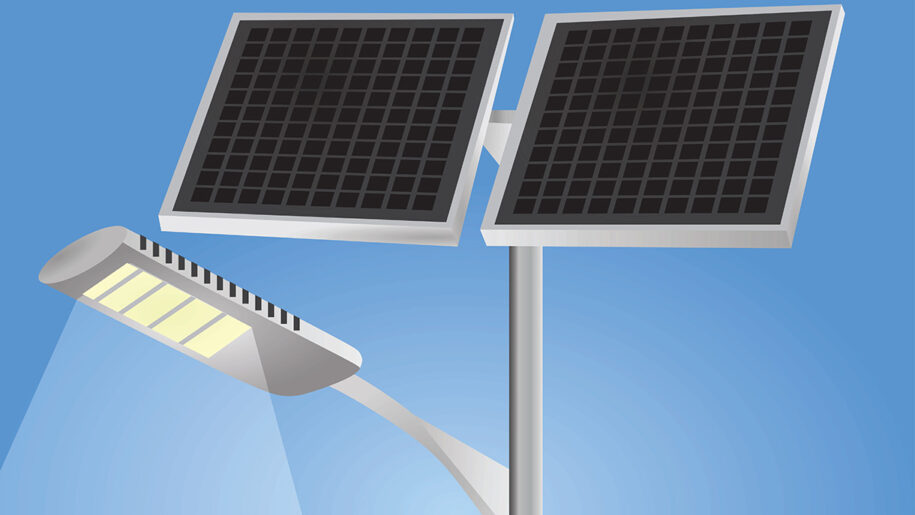Solar vs Traditional Street Lights: A Detailed Comparison
Introduction
Welcome to our detailed comparison between solar and traditional street lights. In this article, we will explore the differences, benefits, and drawbacks of these two lighting systems commonly used for illuminating streets and public spaces. Solar street lights have gained popularity in recent years due to their energy efficiency and environmental friendliness. However, traditional street lights continue to be widely used. Let’s delve into the details and determine which option is better suited for your needs.
Solar Street Lights: Harnessing the Power of the Sun
Solar street lights are powered by solar panels that convert sunlight into electricity. This renewable energy source is not only eco-friendly but also reduces dependency on the electrical grid. The solar panels, typically mounted on top of the street light poles, absorb sunlight during the day and store the energy in batteries for use during the night.
Advantages of Solar Street Lights
- Energy Efficiency: Solar street lights are highly energy efficient since they rely on solar power instead of drawing electricity from the grid. This helps reduce energy consumption and lower utility costs.
- Environmentally Friendly: By utilizing solar energy, these lights have a minimal carbon footprint and do not emit harmful greenhouse gases, contributing to a greener and cleaner environment.
- Off-Grid Operation: Solar street lights are capable of operating independently of the electrical grid, making them ideal for remote areas or locations with unreliable electricity supply.
- Low Maintenance: With fewer components and no wiring required, solar street lights generally have lower maintenance requirements compared to traditional street lights.
Disadvantages of Solar Street Lights
- Initial Cost: The upfront cost of installing solar street lights is higher than traditional lights due to the inclusion of solar panels and batteries. However, the long-term cost savings from reduced energy bills often outweigh the initial investment.
- Weather Dependency: Solar street lights rely on sunlight for power, so their performance can be affected during cloudy days or in regions with limited sunlight. However, advancements in solar technology have improved their efficiency even in less-than-ideal conditions.
- Limited Backup: The battery capacity of solar street lights determines the backup power available. In areas with extended periods of low sunlight, a larger battery capacity may be required to ensure uninterrupted operation during nights or cloudy days.
Traditional Street Lights: A Proven Lighting Solution
Traditional street lights have been the go-to lighting solution for decades. These lights are connected to the electrical grid and rely on electricity supplied by power companies. They are commonly equipped with high-pressure sodium or LED bulbs for illumination.
Advantages of Traditional Street Lights
- Consistent Performance: Traditional street lights provide a reliable source of illumination since they are not dependent on weather conditions or sunlight availability.
- Wide Availability: Traditional street lights are readily available and can be easily installed in urban areas with established electrical infrastructure.
- Cost-Effective: While the initial installation cost may be lower than solar street lights, the operational costs of traditional lights can be higher due to ongoing electricity consumption.
Disadvantages of Traditional Street Lights
- Higher Energy Consumption: Traditional street lights draw electricity from the grid, resulting in higher energy consumption and increased utility costs.
- Carbon Footprint: The reliance on grid electricity often means that traditional street lights contribute to the emission of greenhouse gases and environmental pollution.
- Limited Flexibility: Traditional street lights require a consistent electrical supply, which can be problematic in remote areas or during power outages.
FAQs about Solar vs Traditional Street Lights
1. Are solar street lights more expensive than traditional street lights?
Solar street lights have a higher initial cost due to the inclusion of solar panels and batteries. However, the long-term cost savings from reduced energy bills often make them a more cost-effective option.
2. Do solar street lights work during cloudy days?
Yes, solar street lights can still operate during cloudy days, although their performance may be slightly reduced. Advancements in solar technology have improved their efficiency in less-than-ideal conditions.
3. Which lighting option is more environmentally friendly?
Solar street lights are more environmentally friendly since they rely on renewable energy and have a minimal carbon footprint. Traditional street lights draw electricity from the grid, contributing to greenhouse gas emissions.
4. Can traditional street lights be converted to solar?
Yes, it is possible to convert traditional street lights to solar-powered ones. However, the process involves significant modifications and may require the expertise of a professional.
5. Which lighting option requires less maintenance?
Solar street lights generally require less maintenance compared to traditional street lights since they have fewer components and no wiring. However, occasional cleaning of the solar panels may be necessary for optimal performance.
6. Are solar street lights suitable for all locations?
Solar street lights are suitable for most locations, including remote areas or places with unreliable electricity supply. However, areas with limited sunlight may require larger battery capacities to ensure continuous operation.
Conclusion
After comparing solar and traditional street lights, it is evident that both options have their advantages and drawbacks. Solar street lights provide energy efficiency, environmental friendliness, and the ability to operate off-grid. On the other hand, traditional street lights offer consistent performance and wide availability. The choice between the two depends on factors such as budget, location, and specific requirements.
As sustainable practices gain momentum, solar street lights have emerged as an eco-friendly alternative to traditional lighting systems. While the initial cost may be higher, the long-term benefits of reduced energy consumption and lower utility bills make them a compelling option.
In conclusion, solar street lights are a viable solution for those seeking to harness renewable energy and contribute to a greener future. As technology continues to improve, we can expect even greater efficiency and cost-effectiveness in solar lighting systems.
